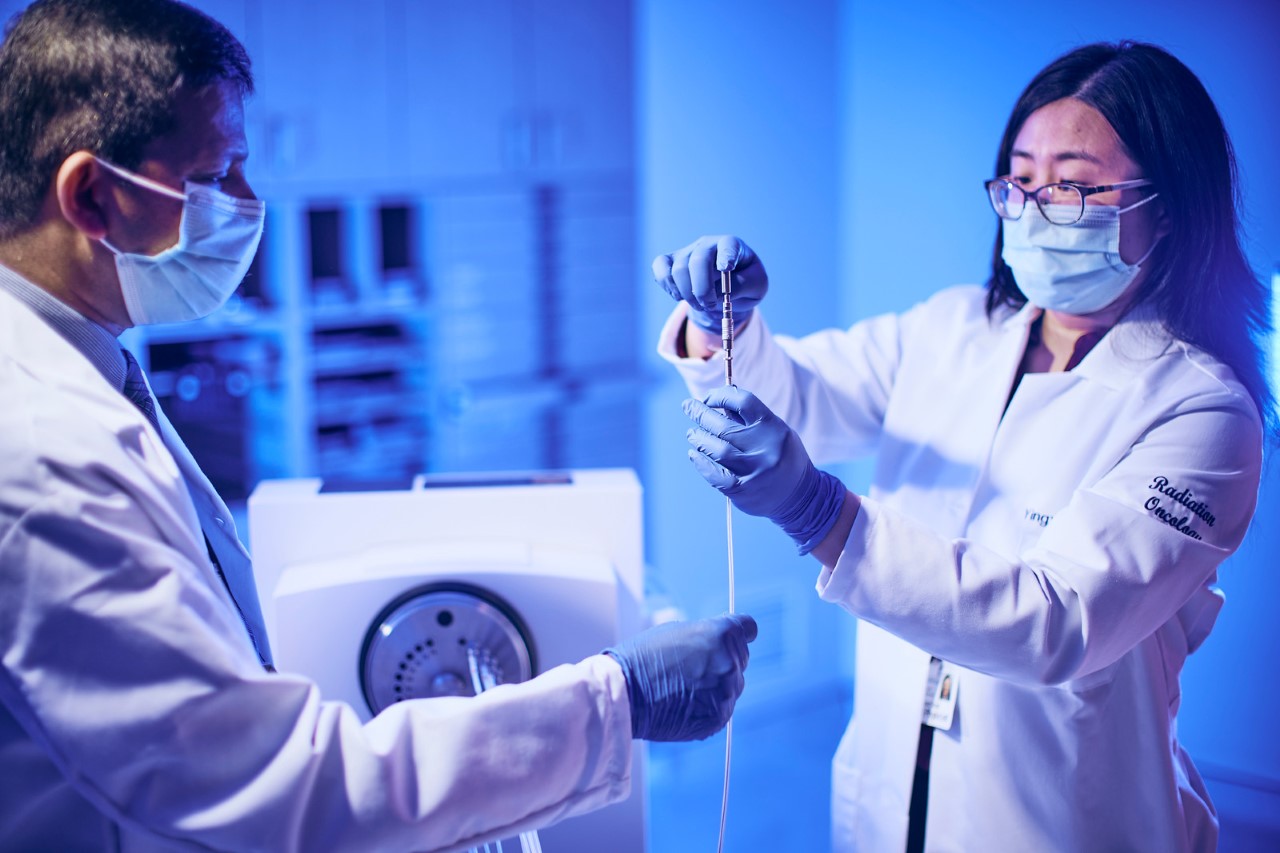Radiation Safety for Internal Radiation Therapy (Brachytherapy)
Internal radiation therapy, also called brachytherapy, uses radioactive materials that are sealed inside a seed, pellet, wire, or capsule. It is then implanted or put into your body through a needle or a catheter. The implants are sealed and tested to make sure that the radioactive material does not leak into your body. Depending on the type of implant used, your body may give off a small amount of radiation for some time.
Brachytherapy can be given using low dose rate or high dose rate methods. The type determines how long they stay in place and the safety precautions that need to be taken after.
Radiation Exposure After Treatment
LDR Brachytherapy
With LDR brachytherapy, there is a low risk of exposure to other people. LDR brachytherapy will slowly stop giving off radiation after a certain amount of time. Your provider will be able to tell you when your permanent implant will stop giving off radiation. In some cases, this treatment is done during a few days' stay in the hospital. Your care team will review the safety precautions with you.
The radiation only travels a short distance around the implant (the treatment area), but safety precautions may still need to be taken. These are different for everyone depending on your specific treatment plan. Some precautions are:
- Stay in the hospital for some time after the implant is placed.
- Limit the number of visitors during treatment and possibly the amount of time you spend with them.
- Limit your time spent with children and pregnant women.
- Avoid pets sitting on your lap for long periods of time.
- Take a provider’s note with you if you are traveling by plane, as radiation can trigger airport sensors.
HDR Brachytherapy
If your implant is temporary (HDR), you will no longer give off radiation once it is removed. No precautions need to be taken once you leave the treatment facility.
Prostate Seed Implants and The Risk to Your Sexual Partner
Prostate cancer brachytherapy is done by implanting seeds into your prostate gland. This is the most common treatment using LDR brachytherapy. There may be extra precautions that you need to take with this type of treatment. Your care team will give you specific safety precautions to take and will tell you how long you need to follow them. They often include:
- Avoid sexual intercourse for one to two weeks after getting the implants.
- Use a condom during sexual intercourse in case a seed is passed during ejaculation.
- Avoid riding a bicycle or motorcycle because the pressure could cause the seeds in your body to move.
Radiation exposure to family and household members after you have received LDR brachytherapy is very low and should not be a concern when considering this type of treatment. There is no risk of exposure to family and household members with HDR brachytherapy. The use of brachytherapy is safe, but it is important to follow the safety precautions given to you by your care team after treatment.
